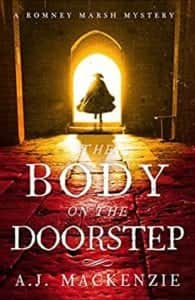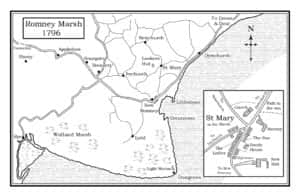In conversation ... with AJ Mackenzie, the pen name of husband and wife historical crime writers and creators of the Hardcastle and Chaytor series


AJ Mackenzie are Marilyn Livingstone and Morgen Witzel, an Anglo-Canadian husband and wife team of writers and historians who live in Cornwall, writes Sue Wilkinson.
Their first series of books The Body on the Doorstep, The Body in the Boat and The Body In the Ice are set in Romney Marsh in the 1700s.
Advertisement
Hide AdAdvertisement
Hide AdQ What inspired you to write the series?We love crime novels and we love 18th century history, even though our academic specialism is the 14th century. The combination of smuggling, the threat of war with France just across the Channel and the opportunities for espionage and murder all made for a good fit. We also had two characters in mind who fit that era perfectly, the slightly dishevelled clergyman Marcus Hardcastle and the mysterious widow Amelia Chaytor. Other characters have developed as we have gone along. For instance, one of the smugglers also becomes the parish constable .


Q What drew you to the setting?A clergyman who lived on Romney Marsh in the 19th century described it as the “Fifth Continent” - after Europe, Asia, Africa and America - and it was this separateness which drew us to it. The Marsh’s low-lying and flat landscape is different from the Weald and Downs that border it, and this difference has engendered a sense of separateness from the rest of the country.This is a landscape with more sheep than people, sparsely populated with small villages and a few small towns. The churches are the largest structures in the landscape, and their towers are visible for miles.Marsh people have defended their independence for centuries. The flat nature of the land also means one can see for miles and the closeness of the French coast is also a feature. Unsurprisingly, given its remoteness and separateness, the marsh and its towns were a focal point for smuggling in the wake of taxation laws introduced in the 18th century. This second economy shaped Marsh society for more than 100 years, creating communities who lived double lives, one legitimate and one not, and this encompassed all ranks of society from fishermen and shepherds to landlords and sometimes even clergymen.Places like this, self contained and separate from the rest of the world, make great settings for stories.
Q How much research did you do?We knew the area from living in Kent in the late ’80s and ’90s, and our work on the Middle Ages meant we knew quite a lot about its earlier economy and society, much of which has changed.We visited the Romney Marsh regularly with visitors to show them the churches and towns such as New Romney, Appledore and Rye. Once we had decided to write the books we did several research trips to add to our knowledge.We spent three weeks in the area visiting churches and other buildings which were there at the time such as the New Romney courthouse. The work of local historians which we found in books and also in the displays and brochures in local churches proved very valuable.Talking to local people also brought an extra element, especially about the nature of local weather patterns and changes in the landscape. The manager of the Kent Wildlife reserve at New Romney was helpful and their restored lookers’ hut was an excellent resource. She hosted the launch of The Body in the Ice at the reserve where we served locally-brewed beer that the Rev Hardcastle would have loved. The Star at St Mary in the Marsh is still there and still a pub with rooms where we stayed after the event.


Q What surprises lurked in the places you visited?The lookers’ hut and staying at the Star were among nice surprises. Also wonderful was Mary’s Tea Room in Dymchurch which supplied refreshment on several occasions. There are some places of beauty and mystery, like the ruined church at Hope, or the far point of Dungeness where you really do feel like you are on the edge of the world.There were some sober moments, like finding the wooden headstones of two executed smugglers at one church. The creepiest location was probably the ossuary in the crypt of St Leonard’s church in Hythe, which boasts of having the largest collection of human bones in Britain, including more than 1,000 skulls arranged on shelves.
Advertisement
Hide AdAdvertisement
Hide AdQ How much did other smuggling tales inspire your books?The novels of Daphne du Maurier, especially Frenchman’s Creek and Jamaica Inn. Mostly, though, we derived our inspiration from the real stories of smugglers and revenue men, and their audacity and ingenuity. Like the man who used a poodle to smuggle in Dutch lace. He shaved the dog’s coat and then wove the fur into a kind of jacket. He then wrapped the lace around the dog’s body and put the jacket back on top to cover it. You couldn’t make this stuff up.
Q When is your next book out?We don’t have a date yet. It is called Hark the Herald, and is a spy thriller set against the backdrop of Hundred Years’ War.